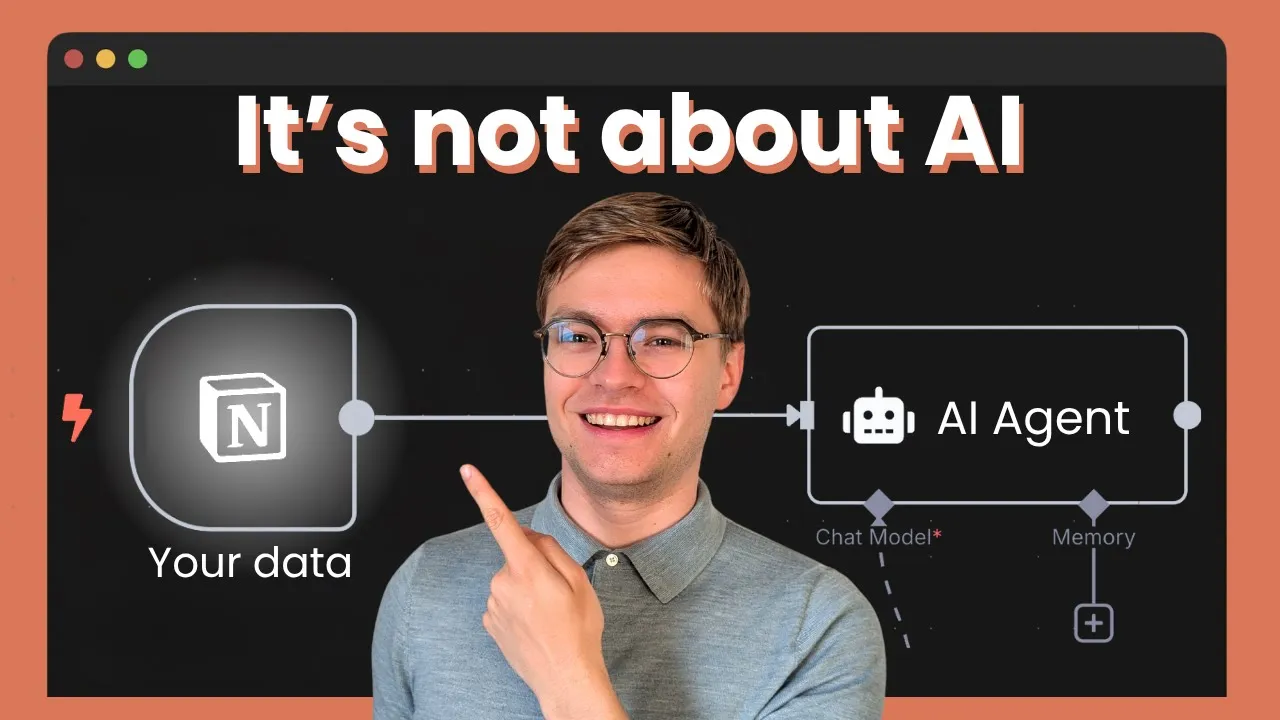n8n vs Python Automation Which Workflow Keeps AI Projects Reliable
Every AI automation pipeline eventually hits the same wall: low quality inputs or runaway token bills ruin the experience. After shipping production workflows with n8n, Claude MCP connectors, and custom Python services, I have learned when visual builders accelerate delivery and when only handwritten code keeps results trustworthy. The choice depends on your data discipline, cost targets, and appetite for ongoing maintenance.
Time to First Workflow
n8n provides a visual canvas, rich node library, and Claude MCP connectors that can pull YouTube transcripts, update Notion databases, and push Markdown into your blog repository within minutes. It is a powerful way to validate process flow and prove value without writing a single line of code. The full onboarding steps are laid out in Getting Started with n8n for AI Projects and the deeper build in How to Use n8n for AI Automation Complete Tutorial.
Python automation demands more upfront work. You design APIs, write scrapers, and handle authentication manually. The payoff is full control over every request, payload, and retry strategy. When I migrated expensive agent loops into a Python backend, the extra effort immediately reduced token usage and removed brittle browser actions.
Use n8n when speed of experimentation matters most. Adopt Python when you already know the workflow needs bespoke logic that nodes cannot express cleanly.
Data Quality and Source Integrity
n8n shines when you feed it authoritative inputs. In the blog automation workflow, we ingested complete YouTube transcripts, captured hooks and insights in Notion, and generated Markdown grounded in the creator’s own voice. The automation amplified expertise because the source material was rich. I detail the data pitfalls in AI Automation for Startups Why Data Quality Matters.
Python becomes essential when inputs are messy. Instead of letting Playwright MCP dump entire web pages into an LLM, I built targeted scrapers that return only the relevant fields. That reduced context size, removed boilerplate, and made every downstream response sharper.
If your data is already curated, n8n orchestrates it elegantly. If you must transform or cleanse information before using it, write Python so you can control every byte.
Cost Management and Token Discipline
The n8n agent demo routed multiple Claude calls through OpenRouter, captured whole HTML payloads, and racked up nearly seventy thousand tokens for a single query. Detailed logs showed about forty-five cents burned in seconds. Visual builders make it easy to stack tool calls, but they do not stop you from overloading the context window.
Python scripts let you prune responses before they hit the model. I moved scraping into a lightweight service that returned structured summaries instead of raw HTML. The next run dropped to a manageable token footprint because the LLM only received the data it actually needed.
When costs spike, replace expensive nodes with focused Python workers that return compact outputs. Keep n8n for orchestration logic where branching and retries benefit from the visual interface. For a broader look at how tool sprawl inflates spend, revisit Hidden Cost of AI Agents.
Scaling and Maintenance
n8n’s drag-and-drop interface helps teams understand the overall flow quickly. Version control still matters, but the mental model stays visual. However, complex edge cases often require JavaScript function nodes or custom integrations that eat away at the original no-code promise.
Python services scale cleanly. They live in normal repositories, enforce linting, and integrate with CI. You can deploy them behind APIs or serverless functions, reuse modules across projects, and share ownership among engineers.
As automation grows more critical, the predictable behavior of Python outweighs the convenience of visual builders. Keep n8n in the loop for orchestration or stakeholder visibility, but anchor the heavy lifting in code.
Decision Framework
- Choose n8n when: you need a working prototype quickly, your inputs are already authoritative, and the team benefits from a visual map of the workflow.
- Choose Python when: you must control every request for cost or compliance reasons, you need advanced scraping or data shaping, or you plan to scale the system into production.
- Hybrid approach: let n8n coordinate high level tasks while Python services handle ingestion, transformation, and cost-sensitive operations. Explore the trade-offs across platforms in n8n vs Zapier for AI Workflows.
Want to see how curated data fuels successful n8n automation and how Python mitigates agent token spikes? Watch the full breakdowns on YouTube: data-first automation at https://www.youtube.com/watch?v=fbevy5gWDes and cost analysis at https://www.youtube.com/watch?v=upHMV5QO7h4. Ready for personalized help balancing no-code and code workflows? Join the AI Engineering community where Senior AI Engineers share templates, scripts, and architectural reviews.

